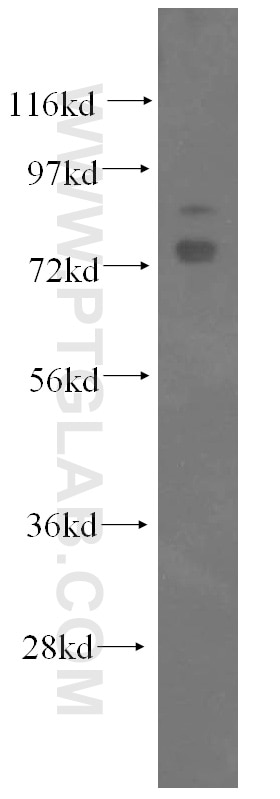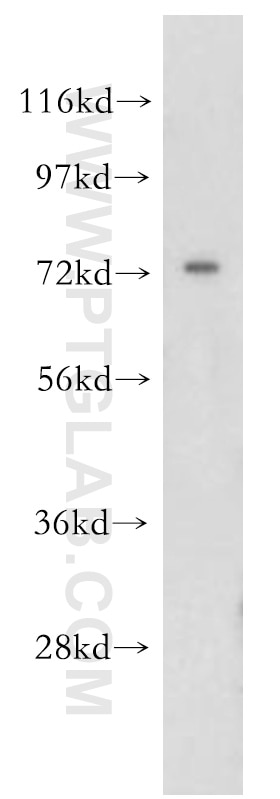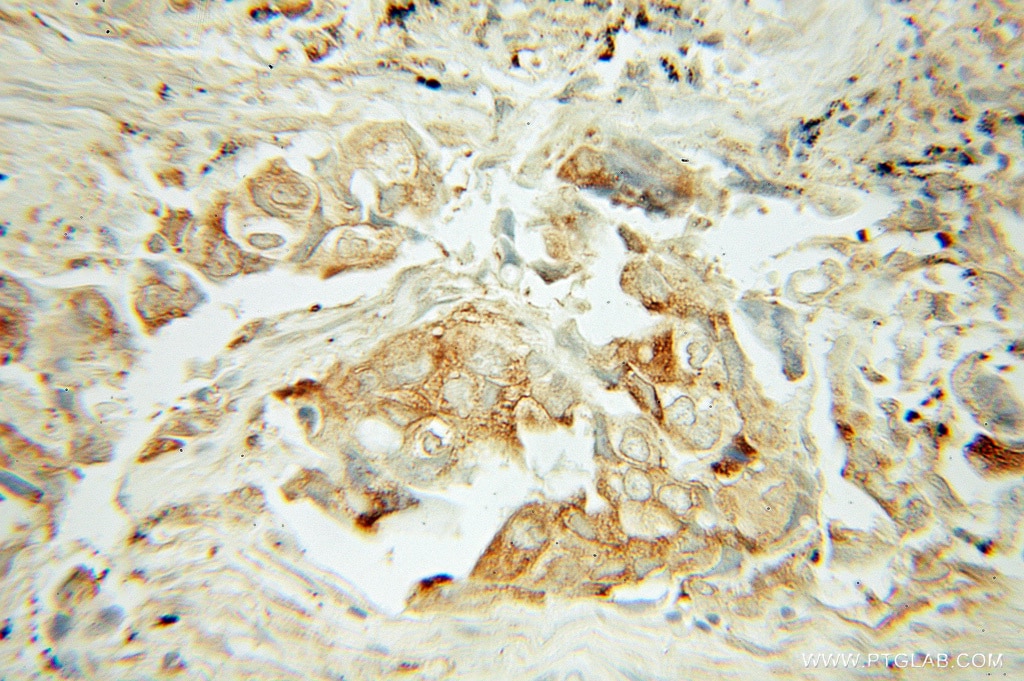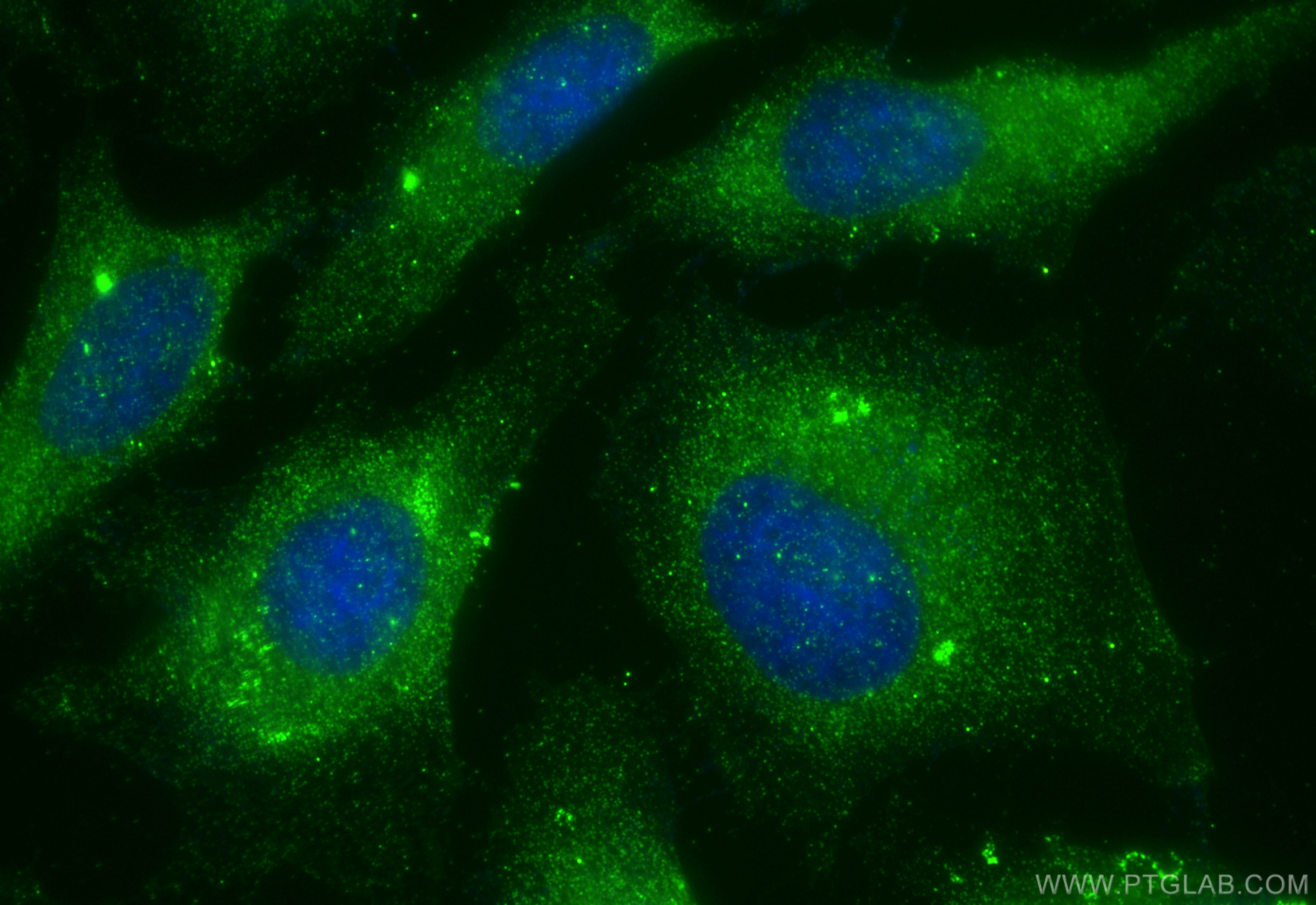Tested Applications
| Positive WB detected in | HEK-293 cells, HeLa cells |
| Positive IHC detected in | human lung cancer tissue, human prostate cancer tissue Note: suggested antigen retrieval with TE buffer pH 9.0; (*) Alternatively, antigen retrieval may be performed with citrate buffer pH 6.0 |
| Positive IF/ICC detected in | HeLa cells |
Recommended dilution
| Application | Dilution |
|---|---|
| Western Blot (WB) | WB : 1:200-1:1000 |
| Immunohistochemistry (IHC) | IHC : 1:20-1:200 |
| Immunofluorescence (IF)/ICC | IF/ICC : 1:200-1:800 |
| It is recommended that this reagent should be titrated in each testing system to obtain optimal results. | |
| Sample-dependent, Check data in validation data gallery. | |
Published Applications
| KD/KO | See 4 publications below |
| WB | See 8 publications below |
| IF | See 1 publications below |
Product Information
10061-1-AP targets OS9 in WB, IHC, IF/ICC, ELISA applications and shows reactivity with human samples.
| Tested Reactivity | human |
| Cited Reactivity | human |
| Host / Isotype | Rabbit / IgG |
| Class | Polyclonal |
| Type | Antibody |
| Immunogen | OS9 fusion protein Ag0106 Predict reactive species |
| Full Name | osteosarcoma amplified 9, endoplasmic reticulum associated protein |
| Calculated Molecular Weight | 76 kDa |
| Observed Molecular Weight | 73 kDa |
| GenBank Accession Number | BC000532 |
| Gene Symbol | OS9 |
| Gene ID (NCBI) | 10956 |
| RRID | AB_2236537 |
| Conjugate | Unconjugated |
| Form | Liquid |
| Purification Method | Antigen affinity purification |
| UNIPROT ID | Q13438 |
| Storage Buffer | PBS with 0.02% sodium azide and 50% glycerol , pH 7.3 |
| Storage Conditions | Store at -20°C. Stable for one year after shipment. Aliquoting is unnecessary for -20oC storage. 20ul sizes contain 0.1% BSA. |
Background Information
OS-9 is a ubiquitously expressed ensoplasmic reticulum (ER)-associated protein originally identified as being amplified in certain osteosarcomas. It functions in ER quality control and ER-associated degradation (ERAD). There are three isoforms of this protein: OS-9.1, OS-9.2 and OS-9.3. The longest isoform, OS-9.1, contains 667 aa, OS-9.2 lacks aa 535-589, whereas OS-9.3 lacks aa 456-470 and 535-589. OS-9.1 and OS-9.2 are N-glycosylated, ubiquitously expressed in human tissues, and amplified in tumors. Isoform 2 is the major isoform detected in all cell types examined. This antibody can recognize all three isoforms of OS-9.
Protocols
| Product Specific Protocols | |
|---|---|
| WB protocol for OS9 antibody 10061-1-AP | Download protocol |
| IHC protocol for OS9 antibody 10061-1-AP | Download protocol |
| IF protocol for OS9 antibody 10061-1-AP | Download protocol |
| Standard Protocols | |
|---|---|
| Click here to view our Standard Protocols |
Publications
| Species | Application | Title |
|---|---|---|
Nat Cell Biol OS-9 and GRP94 deliver mutant alpha1-antitrypsin to the Hrd1-SEL1L ubiquitin ligase complex for ERAD.
| ||
J Biol Chem OS-9 regulates the transit and polyubiquitination of TRPV4 in the endoplasmic reticulum.
| ||
J Biol Chem Human OS-9, a lectin required for glycoprotein endoplasmic reticulum-associated degradation, recognizes mannose-trimmed N-glycans. | ||
J Biol Chem Human XTP3-B forms an endoplasmic reticulum quality control scaffold with the HRD1-SEL1L ubiquitin ligase complex and BiP. | ||
J Biol Chem SEL1L protein critically determines the stability of the HRD1-SEL1L endoplasmic reticulum-associated degradation (ERAD) complex to optimize the degradation kinetics of ERAD substrates.
| ||
FEBS J Endoplasmic reticulum lectin XTP3-B inhibits endoplasmic reticulum-associated degradation of a misfolded α1-antitrypsin variant.
|













